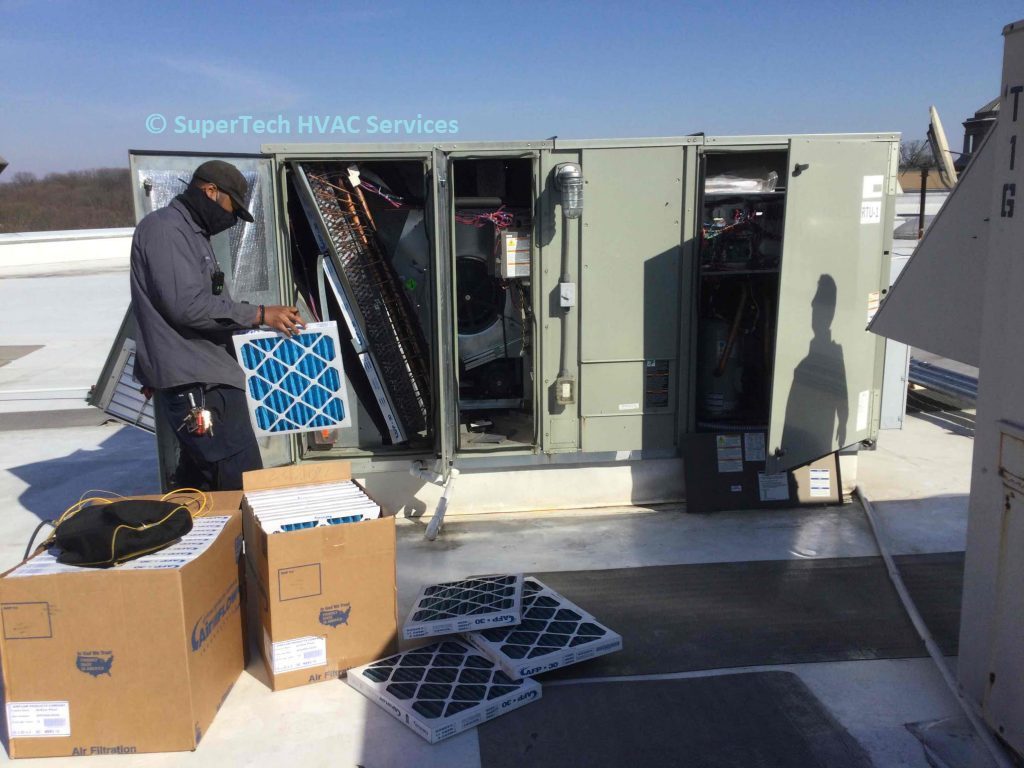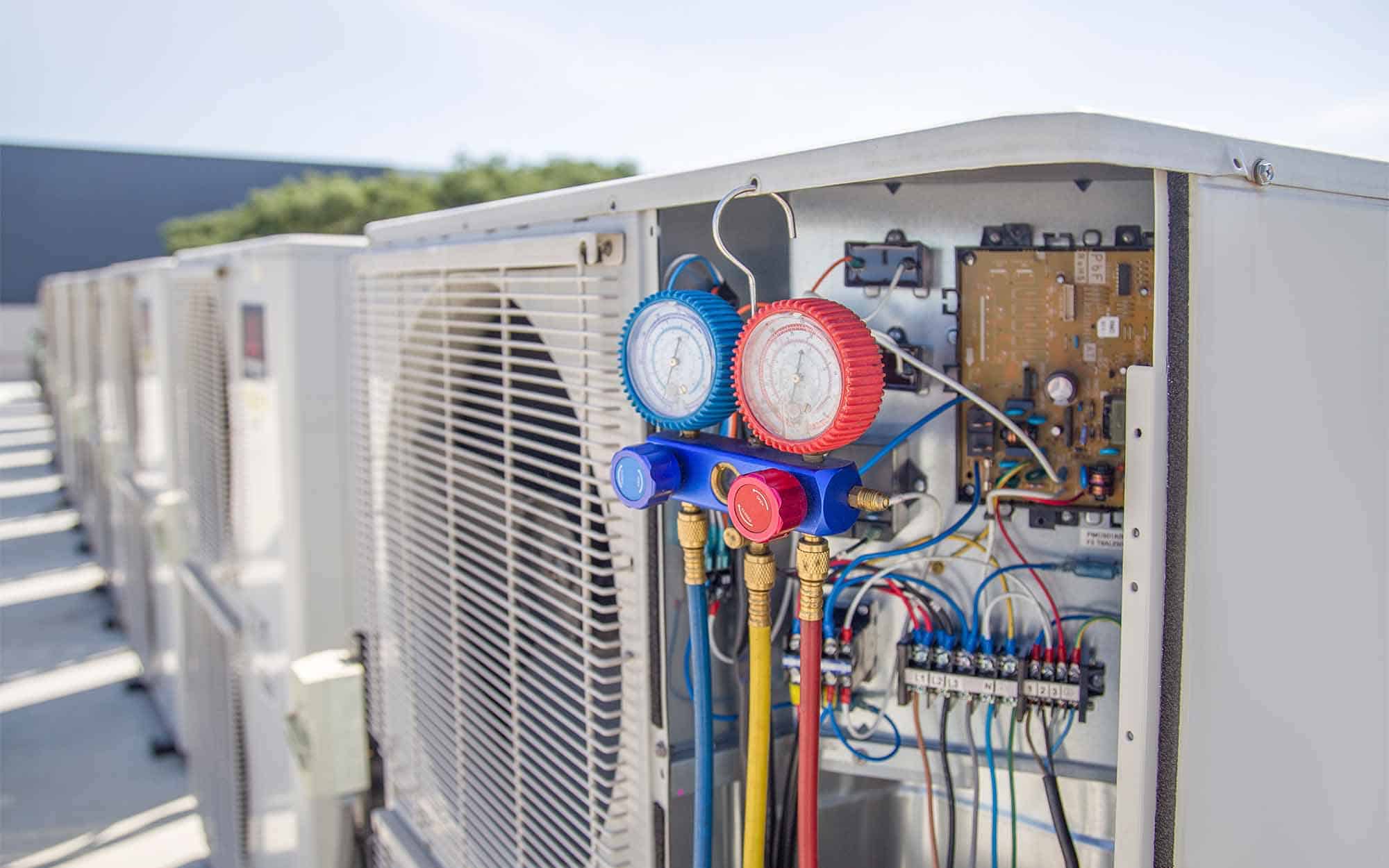Exactly How a Heatpump and Heating System Work With Each Other to Enhance Your Home's Heating Performance
Comprehending how a heat pump and heater job with each other is crucial for property owners seeking reliable heating solutions. Each system has its staminas, offering a well balanced approach to home comfort. The heatpump masters modest temperatures, while the furnace delivers fast heat throughout severe cold. This harmony not just decreases power prices but also improves the lifespan of both home appliances. What aspects affect this cooperation, and how can house owners optimize their advantages?
Comprehending Warm Pumps: Just How They Function
Lots of people might be unknown with their inner functions, warm pumps play a necessary duty in modern-day home heating systems. These tools run by moving warm from one area to one more, using the principles of thermodynamics. In chillier months, a heat pump essences heat from the outside air, ground, or water, and transfers it indoors to heat the home. On the other hand, during warmer months, it can turn around the process, functioning as an air conditioner by expelling warmth from inside to the outside.Heat pumps include an evaporator, expansion, condenser, and compressor shutoff. The refrigerant within the system absorbs warm as it vaporizes at low temperatures and pressures. The compressor after that enhances the stress and temperature level of the cooling agent, allowing it to release heat as it condenses. This efficient procedure can considerably reduce power usage compared to traditional heating approaches, making heatpump a sustainable selection for environment control in homes.
The Duty of Heaters in Home Heating
Furnaces play a vital role in home heating by giving a dependable resource of warmth throughout the cooler months. They run by creating warmth through burning or electrical resistance, distributing it throughout the home using air ducts or radiant systems. The performance of a heating system is frequently measured by its Annual Gas Utilization Performance (AFUE) rating, which shows exactly how successfully the system converts fuel right into heat.Furnaces can make use of various energy resources, including all-natural gas, lp, electrical energy, or oil, enabling homeowners to pick the most appropriate option for their requirements. Unlike heatpump, which might have a hard time in severe cold, heating systems keep regular performance, ensuring that interior temperatures remain comfortable no matter of exterior conditions. In addition, modern-day heaters commonly come geared up with sophisticated modern technology, such as wise thermostats and variable-speed blowers, enhancing their efficiency and responsiveness. This adaptability makes furnaces a critical part in comprehensive home heating strategies.

Advantages of Utilizing Both Equipments Together
Integrating the staminas of both furnaces and heatpump can cause an extra effective and reliable home heating remedy. Using both systems allows homeowners to capitalize on the heatpump's energy efficiency throughout milder temperatures while counting on the heater for more severe cold conditions. This dual technique can considerably decrease energy expenses, as heatpump consume much less power than typical home heating methods when temperature levels are moderate.Additionally, utilizing both systems together can boost comfort degrees in the home. Heatpump can supply regular, even heating, while heating systems can rapidly increase ambient temperatures when needed. Additionally, the combination of both systems can expand the life expectancy of equipment by lowering wear and tear on each system, as they share the workload. Inevitably, homeowners can enjoy a well balanced, affordable home heating remedy that changes seamlessly to differing climate condition, guaranteeing a cozy and welcoming home throughout the winter season.
Just How Heat Pumps and Furnaces Complement Each Various Other
When homeowners integrate warmth pumps and heaters, they create a complementary heating unit that makes the most of effectiveness and convenience. Heatpump run by transferring warmth from the outdoors air or ground, making them very efficient in modest climates. They excel during milder temperatures, supplying cost-efficient home heating. Alternatively, furnaces produce warmth via burning or electrical resistance, providing solid, instant warmth during extreme cold conditions.The combination of these 2 systems enables for dynamic modifications based on temperature changes. Throughout warmer months or milder winter season days, the heatpump can take the lead, preserving power and lowering costs. As temperatures decline, the heating system can flawlessly engage, ensuring regular heat throughout the home. This synergy not only maximizes power usage but also boosts the life-span of both systems, as each unit runs within its optimal efficiency variety. Together, they develop a well balanced environment that adjusts to differing climate needs.
Maximizing Efficiency: Tips for Homeowners
Homeowners can boost their heating effectiveness with several practical methods. Developing a normal maintenance timetable, integrating smart thermostat innovation, and carrying out effective insulation and securing solutions are crucial steps. These procedures not only improve convenience yet additionally reduce power costs.
Regular Upkeep Schedule
To ensure maximum heating performance, developing a regular maintenance timetable is vital for any type of home. Homeowners must prioritize our website routine assessments of both heat pumps and heating systems to establish peak performance. This consists of altering air filters each to 3 months, as clogged up filters can considerably lower efficiency. Furthermore, scheduling specialist maintenance a minimum of yearly permits professionals to determine and attend to possible concerns before they rise. Home owners should also clean up the warmth pump's outdoor unit to avoid debris build-up that can prevent air movement. By sticking to a regular upkeep schedule, property owners not only improve their home heating systems' effectiveness yet also expand their lifespan, leading to greater comfort and lowered energy expenses throughout the chillier months.
Smart Thermostat Combination
Integrating a clever thermostat right into a home heating unit can greatly enhance power effectiveness, particularly as it enables exact control over temperature settings. These devices can learn the home owner's timetable and preferences, instantly adjusting the temperature level to enhance comfort while reducing energy usage. For circumstances, they can lower home heating throughout times when the home is vacant, lowering unnecessary intake. Many clever thermostats also give real-time energy usage information, allowing property owners to make informed choices about their home heating habits. In addition, remote gain access to using mobile phone applications allows customers to change setups from anywhere, guaranteeing the home is cozy upon return. Generally, smart thermostat assimilation not just enhances convenience but significantly adds to energy financial savings and performance.
Insulation and Securing Solutions
Smart thermostats play a crucial function in energy effectiveness, yet their effectiveness can be significantly improved by proper insulation and sealing options. Home owners need to prioritize shielding walls, floorings, and attics to decrease warm loss. Top quality insulation materials, such as spray foam or fiberglass, can greatly improve thermal resistance. In addition, securing voids around home windows, doors, and air ducts protects against cold air infiltration and heat escape. Weatherstripping and caulking are effective methods for attending to these leaks - heat pump installation ooltewah tn. Normal assessments for air leaks, together with making use of blower door examinations, can assist identify trouble areas. By purchasing insulation and sealing, home owners can enhance the efficiency of their heater, ultimately resulting in decreased energy intake and reduced utility costs
Usual Misconceptions Regarding Warmth Pumps and Furnaces
What mistaken beliefs surround heat pumps and heaters? Many people wrongly believe that heatpump are inadequate in chillier climates. Actually, contemporary heatpump are made to run efficiently also in reduced temperature levels, offering reputable heating throughout winter months. Another common misconception is that furnaces are constantly extra reliable than warm pumps. However, this relies on the particular energy resources and effectiveness rankings of the systems in concern. Some may additionally assume that using both systems concurrently is unnecessary, yet actually, this mix can optimize home heating effectiveness, particularly during extreme weather. Furthermore, individuals often presume that warm pumps require continuous upkeep, when truthfully, they have comparable maintenance requires to conventional heating unit. By unmasking these misconceptions, home owners see can make even more enlightened decisions regarding their home heating alternatives, eventually leading to improved comfort and energy effectiveness in their homes.
Maintenance Factors To Consider for Combined Solutions

Frequently Asked Inquiries
Can Warm Pumps Work Properly in Extremely Cold Climates?
Warm pumps can have a hard time in extremely cold environments as a result of reduced performance and warm removal limitations. However, developments in innovation have caused models developed for far better performance in such problems, enhancing their viability in extreme environments.
For How Long Do Warm Pumps and Furnaces Usually Last?
Heatpump typically last 15 to 20 years, while heating systems have a life expectancy of 15 to three decades. Normal maintenance can extend their longevity, ensuring reliable operation and lowering the need for early substitutes.

What Is the Typical Expense of Putting Up Both Solutions?
The typical price of setting up both a warmth pump and a heater normally varies between $5,000 to $10,000 - heat pump replacement ooltewah tn. Elements affecting this expense consist of system dimension, setup intricacy, and local labor prices
Exist Tax Motivations for Utilizing Energy-Efficient Heating Solutions?
Numerous home owners ask about tax motivations for energy-efficient furnace. Various government and state programs frequently use credit scores or discounts, motivating the fostering of sustainable technologies to minimize energy intake and advertise ecological responsibility.
How Do I Select the Right Size Heatpump and Furnace?
Choosing the right size warm pump and heater involves computing the home's square video footage, taking into consideration insulation top quality, and evaluating neighborhood environment. Consulting a specialist can ensure perfect system efficiency and energy performance based upon particular needs. heat pump installation ooltewah tn. Understanding how a heat pump and heater job with each other is important for homeowners looking for efficient heating solutions. In cooler months, a warm pump removes warm from the outside air, ground, or water, and transfers it indoors to heat the living space. When home owners integrate heat pumps and furnaces, they create a corresponding heating system that optimizes performance and convenience. Warm pumps run by transferring heat from the outside air or ground, making them very effective in modest climates. Warmth pumps can have a hard time in extremely chilly climates due to reduced efficiency and warm removal restrictions